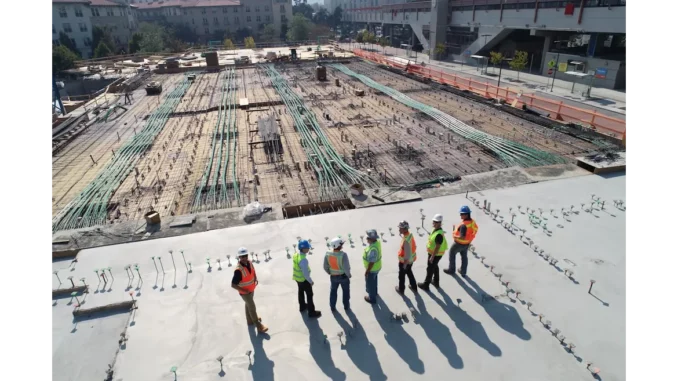
The construction industry stands at a critical crossroads following the sweeping recommendations of the Grenfell Inquiry. Among these pivotal suggestions is the introduction of a licensing system for contractors working on higher-risk buildings, supervised by a newly proposed construction regulator. To delve deeper into the potential impact of these changes, I conversed with James Thornton, a veteran project manager with over two decades of experience in high-rise developments.
Focus360 Energy: property compliance services – pre-planning to post-construction. Learn more.
Settling into a bustling London café, James Thornton exuded a mix of cautious optimism and seasoned pragmatism. “These recommendations, if implemented, could fundamentally change the way we operate,” he remarked, pausing to sip his coffee. “And frankly, it’s about time.”
James has witnessed the full spectrum of the construction industry’s strengths and weaknesses. On the subject of licensing contractors for higher-risk buildings, his enthusiasm was palpable. “This could be a game-changer. Licensing will ensure that only those with the requisite skills and experience are entrusted with projects that directly affect public safety.” He elaborated on the current landscape, noting how the absence of stringent regulations has sometimes allowed underqualified contractors to undertake complex projects. “It’s not just about having a piece of paper that says you’re qualified. It’s about proving that you have the necessary experience and expertise to manage high-risk projects. A licensing system overseen by a competent regulator can help filter out the chaff.”
The proposal to establish a new construction regulator aims to centralise oversight functions that are currently fragmented. “We need a single body to bring everything together,” James emphasised. “At present, responsibilities are scattered across various entities, creating a grey area in accountability.” He pointed out that a new regulator could standardise best practices across the industry. “Imagine a centralised body that not only enforces regulations but also shares best practices and conducts research. This could lead to a more integrated and efficient industry.”
One of the most compelling aspects of the report is the call for senior accountability in ensuring fire safety. “This is crucial,” James said, nodding in agreement. “Having a senior member of the contractor’s organisation personally responsible for fire safety will ensure that it’s given the importance it deserves.” He explained how this could alter the current mindset. “When someone at the top is legally accountable, it trickles down the hierarchy. Everyone becomes more vigilant, knowing that any lapse could have severe consequences.”
The report also advocates for a significant overhaul in the regulation of construction products, calling for a more rigorous testing and certification process. “This is another area where we’ve been lacking,” James admitted. “Products should be tested rigorously and consistently. It’s not enough to rely on manufacturers’ claims. A central regulator would ensure that all products meet the highest standards.” He recounted instances where substandard materials had infiltrated projects, causing delays and additional costs. “A robust product certification process can prevent these issues, ensuring that only top-quality materials are used.”
The inquiry’s findings on the relationship between building control officers and contractors were particularly enlightening. “The idea that building control was seen as part of the design team rather than a regulatory body is alarming,” James remarked. “Centralising these functions under a single regulator can redefine their role, making it clear that their primary function is regulatory.” He believes this change will foster a new culture of compliance. “When everyone knows the rules and understands that they will be enforced rigorously, it creates a climate of accountability and transparency.”
The report also suggests redefining what constitutes a higher-risk building. “This is a logical step,” James said. “Defining risk based solely on a building’s height is arbitrary. We need to consider other factors, such as the building’s use and the vulnerability of its occupants.” He added that this redefinition would lead to more targeted and effective regulations. “By focusing on the actual risks, we can develop more nuanced and effective safety measures.”
The recommendation to consolidate fire safety responsibilities under a single minister also resonated with James. “Having a unified political approach is essential for coherent policy-making,” he said. “When responsibilities are divided among multiple departments, it leads to inefficiencies and gaps in oversight.” He believes that a single department dedicated to fire safety would streamline decision-making processes and ensure that policies are implemented more effectively.
As our conversation drew to a close, James reflected on the future of the construction industry. “These recommendations, if adopted, could usher in a new era of safety and professionalism,” he said. “It won’t be easy, and it will require significant adjustments, but the long-term benefits far outweigh the challenges.” James’s insights offer a glimpse into the potential transformation awaiting the construction industry. The Grenfell Inquiry’s recommendations could catalyse a much-needed overhaul, ensuring that safety and competence become the cornerstones of all future high-risk building projects.


Be the first to comment